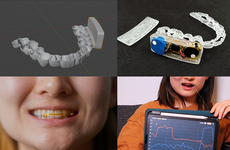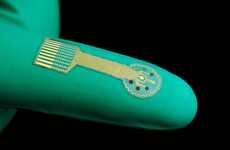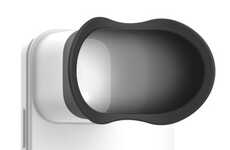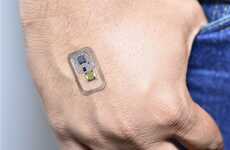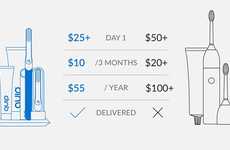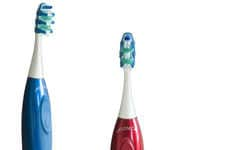
Graphene-Based Sensors Help Keep Pearly Whites Super Clean
Sarah Moore — April 7, 2012 — Unique
Anyone who dreads having to take a trip to the dentist for an uncomfortable seat in the dental chair will be happy to know that Michael McAlpine and a team of researchers from Princeton University have engineered graphene-based sensors that wirelessly monitor bacteria on teeth.
These remote chemical sensors attach to the flat surface of one's teeth and use antimicrobial peptides and a resonant coil to monitor the level of icky microorganisms floating around inside a person's mouth. The gold-colored sensors are nontoxic and extremely flexible to ensure long-wear.
Similar to the way an electronic key card reads information, the sensors connect with a detector to transmit messages about the cleanliness of a tooth to an external device -- all without poking and prodding the gums with the scary, steel tools generally required to garner such information.
The molar markings aren't quite ready for mass production just yet, but a bright future for the pearly white protectors lies ahead.
These remote chemical sensors attach to the flat surface of one's teeth and use antimicrobial peptides and a resonant coil to monitor the level of icky microorganisms floating around inside a person's mouth. The gold-colored sensors are nontoxic and extremely flexible to ensure long-wear.
Similar to the way an electronic key card reads information, the sensors connect with a detector to transmit messages about the cleanliness of a tooth to an external device -- all without poking and prodding the gums with the scary, steel tools generally required to garner such information.
The molar markings aren't quite ready for mass production just yet, but a bright future for the pearly white protectors lies ahead.
Trend Themes
1. Graphene-based Sensors - Disruptive innovation opportunity: Develop advanced sensors for various applications, such as healthcare monitoring and environmental sensing.
2. Wireless Monitoring - Disruptive innovation opportunity: Create wireless monitoring solutions for different industries, like healthcare and agriculture.
3. Non-invasive Dental Technology - Disruptive innovation opportunity: Explore non-invasive dental technologies for improved oral health monitoring and treatment.
Industry Implications
1. Healthcare - Disruptive innovation opportunity: Integrate graphene-based sensors into various healthcare applications, such as wearable health devices.
2. Environmental Monitoring - Disruptive innovation opportunity: Apply graphene-based sensors in environmental monitoring systems for real-time data collection and analysis.
3. Dental Care - Disruptive innovation opportunity: Develop innovative dental technologies that improve the patient experience and provide accurate diagnostic information.
2.8
Score
Popularity
Activity
Freshness

